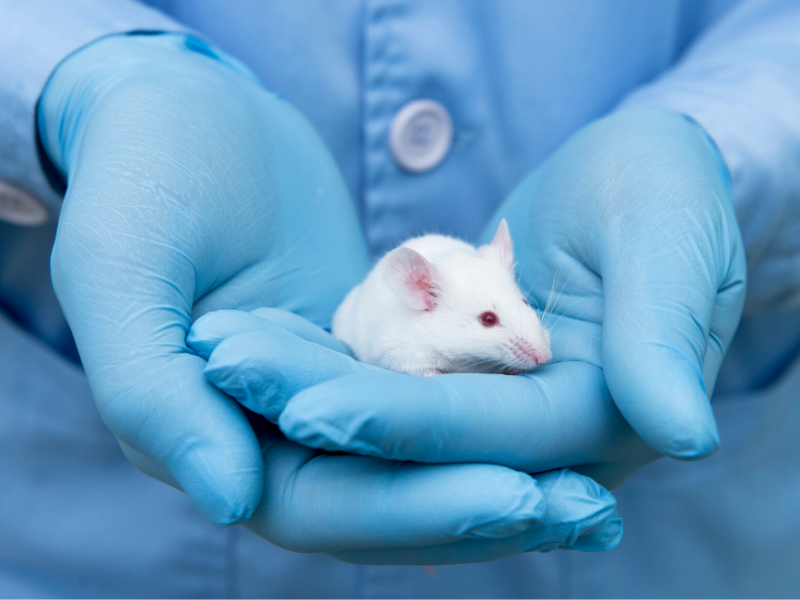
The Coronavirus pandemic called COVID-19 is an important opportunity to reassess the way we do medical research. Faced with this viral tsunami, scientists have not had time to find one or more animal species to serve as a ‘model’ to study this disease in the laboratory.
In the case of seasonal flu, doctors have well-known ways to lower rates of infection, such as vaccines and antiviral drugs, which can decrease the severity of symptoms and the duration of the disease. But faced with an emergency situation, researchers decided to test new treatments directly on patients. It should be noted that these are not untested medical drugs but rather drugs used for other diseases, or else different combinations of drugs already on the market.
This kind of human experimentation is called a ‘clinical trial’. Its purpose is to assess the efficacy of a treatment following the approval by ethics committees and the informed consent of the patient. A clinical trial is normally preceded by several ‘preclinical’ steps to assess the toxicity and efficacy of a new treatment. One of these steps is animal testing. This regulatory requirement dates back to the Nuremberg Codes of 1947 and is still the norm in national and international legislation today. Yet, according to the US Food and Drug Administration, out of ten medical drugs that have successfully passed the required tests on animals, nine will fail in clinical trials involving humans (due to lack of efficacy or to side effects not seen in animals). This represents a 90% failure rate or a 10% prediction rate based on animal tests.
It is interesting to note that scientists closely involved in the search for a treatment or a vaccine against COVID-19 also recognise the fact that animal tests are unreliable to predict human reactions. Let us quote some of them. According to Tal Zaks, medical director of Moderna, a successful biotech company in the United States: “I don’t think proving this in an animal model is on the critical path to getting this to a clinical trial” (1). Barney Graham, director of the National Institute of Allergy and Infectious Diseases (NIAID) also in the United States notes that standard laboratory mice do not catch this new Coronavirus, as humans do (2). Finally, Karen Maschke, editor of the journal Ethics & Human Research, pointed out that animal studies are often poor predictors of what will work in humans (3).
Of course, making a new vaccine is not without risk. This is the reason for using evidence-based technologies, as demonstrated by ‘personalised’ medicine and vaccines. Indeed, doctors and researchers note that we are not all equal to the risk of infection by this virus. Why are children far less susceptible than the elderly, for example? Crucially, the clinical information that is being collected constitutes the best data to develop personalised treatments and vaccines, more effective and with fewer side effects than conventional treatments.
This is a golden opportunity to get rid of the ‘animal model’, a concept that belongs to the 20th century, and to focus our efforts on the species in question, namely humans. To try to reproduce a human disease in an animal is a perversion of science, a complete misunderstanding of the complex system that we are and of the different complex systems that make up our organism, such as the immune system. Each animal species is a complex system and therefore cannot serve as a model for another. Even among humans, there are important differences between children and adults, men and women, in terms of susceptibility to COVID-19. Rather than experimenting with ferrets, monkeys or mice, it would be more intelligent – and far more scientific – to invest in high-performance technologies of the 21st century.
One example is the ‘MIMIC’ (Modular IMmune In vitro Construct). It is an in vitro model of the human immune system (4). “The information you get from this type of test is far and beyond what you’d get out of a mouse study,” says Michael Rivard, vice president of corporate development at VaxDesign, “both because it’s humans and because you can see the effect across a spectrum of genotypes” (5).
Advanced in vitro technologies (such as MIMIC, ‘organs on a chip’ and others) must aim for a prediction rate of 85 to 90 % in order to be accepted at the regulatory level, whereas the ‘animal model’ achieves a prediction rate of only 10% according to the FDA. A testing strategy based on a battery of in vitro tests using human material would be far more relevant than pursuing animal tests. It is time to change the current paradigm in biomedical research if we want to preserve our health in the face of emerging diseases of the 21st century. Perhaps the COVID-19 pandemic will help us to question some of our outdated scientific practices as well as the obsolete regulations that still impose them.
Dr Andre Menache BSc(Hons) BVSc MRCVS is a veterinarian who advises extensively on animal welfare matters. He is director of Antidote Europe, based in France and is a patron of Quaker Concern for Animals. He has been president of Doctors and Lawyers for Responsible Medicine (UK) and general manager of The Federation of Animal Protection Societies in Israel. He currently provides scientific support to several grass roots organisations.
References:
Researchers rush to test coronavirus vaccine in people without knowing how well it works in animals

